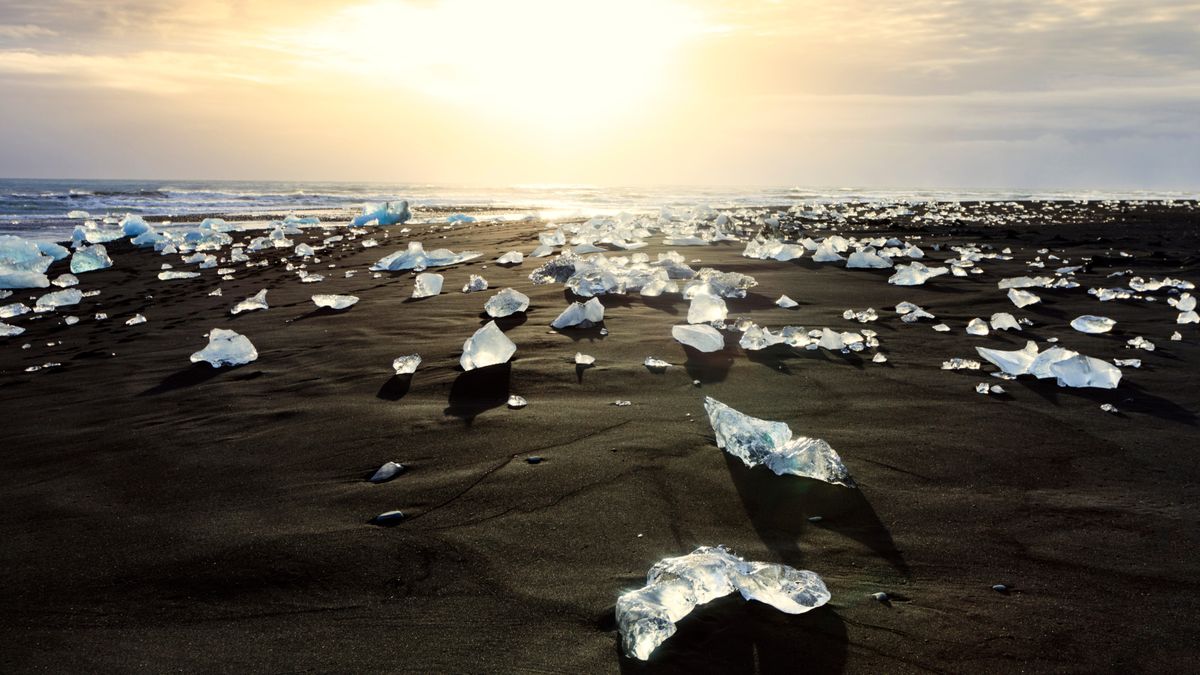QUICK FACTS
Name: Diamond Beach
Location: South Coast of Iceland
Coordinates: 64.04444424566333, -16.17757792223207
Why it’s incredible: The beach is littered with gleaming fragments of iceberg.
Diamond Beach is a strip of jet-black sand covered in sparkling chunks of ice. The beach is a stone’s throw away from Iceland’s Jökulsárlón glacier lagoon, a clear lake that ferries giant icebergs to the Atlantic Ocean.
The icebergs originate from the Breiðamerkurjökull glacier, which discharges meltwater and ice into the Jökulsárlón glacier lagoon. The bergs and other glacial debris float lazily around the lagoon and eventually find their way to the ocean via a short waterway that runs perpendicular to the coastline.
Related: Polar bear sleeping on tiny iceberg drifting in Arctic sea captured in heartbreaking photo
But not all the fractured ice makes it out to sea. Blocks of it wash up on Diamond Beach — or “Breiðamerkursandur” in Icelandic — where they glisten like gemstones strewn across the black sand, according to Guide to Iceland. The “diamond” effect grows stronger with time, as the waves and wind polish the stranded ice chunks.
Diamond Beach is one of several black sand beaches in Iceland. The beach owes its striking color to past volcanic activity that painted the landscape with a type of dark, runny lava called basaltic lava. This lava hardened into basalt rocks, and these were then ground into black sand by moving glaciers, according to Guide to Iceland.
Diamond Beach sits downstream from Europe’s largest ice cap, Vatnajökull, which is rimmed on all sides by glaciers — including the Breiðamerkurjökull and nearby Fjallsjökull glaciers.
And if the bejeweled appearance of Diamond Beach wasn’t mesmerizing enough, the sandy stretch is home to seals and is one of the best spots in Iceland to watch orcas from the shore. It’s also an excellent location to see auroras (also called the northern lights) in the winter, according to Guide to Iceland.
